The construction of the wonderful canon of logarithms
The construction of the wonderful canon of logarithms
The construction of the wonderful canon of logarithms
Create successful ePaper yourself
Turn your PDF publications into a flip-book with our unique Google optimized e-Paper software.
40 Construction <strong>of</strong> <strong>the</strong> Canon.<br />
find <strong>the</strong> logarithm <strong>of</strong> this sine now contained in<br />
<strong>the</strong> table, and <strong>the</strong>n add to it <strong>the</strong> logarithmic difference<br />
which <strong>the</strong> short table indicates as required<br />
by <strong>the</strong> preceding multiplication.<br />
Example.<br />
IT is<br />
378064. Since this sine is outside <strong>the</strong> limits<br />
required to find <strong>the</strong> logarithm <strong>of</strong> <strong>the</strong> sine<br />
<strong>of</strong> <strong>the</strong> Radical table, let it be multiplied by some<br />
proportional number in <strong>the</strong> foregoing short table,<br />
as by 20, when it will become 7561280. As this<br />
now falls within <strong>the</strong> Radical table, seek for its<br />
logarithm (by 50) and you will obtain 2795444.9,<br />
to which add 29957311.56, <strong>the</strong> difference in <strong>the</strong><br />
short table corresponding to <strong>the</strong> proportion <strong>of</strong><br />
Where-<br />
twenty to one, and you have 32752756.4.<br />
fore 32752756 is <strong>the</strong> required logarithm <strong>of</strong> <strong>the</strong><br />
given sine 378064.<br />
55. As half radius is to <strong>the</strong> sine <strong>of</strong> half a given arc, so is<br />
<strong>the</strong> sine <strong>of</strong> <strong>the</strong> complement <strong>of</strong> <strong>the</strong> half arc to <strong>the</strong> sine <strong>of</strong><strong>the</strong><br />
whole arc.<br />
Let a b be radius, and a b c its double, on<br />
which as diameter is described a semicircle. On<br />
this lay <strong>of</strong>f <strong>the</strong> given arc a e, bisect it in d, and<br />
from e in <strong>the</strong> direction<br />
<strong>of</strong> c lay <strong>of</strong>f e h,<br />
<strong>the</strong> complement <strong>of</strong><br />
d e, half <strong>the</strong> given<br />
arc. <strong>The</strong>n h c is<br />
necessarily equal to<br />
e h, since <strong>the</strong> quadrant<br />
d e h must equal<br />
i<br />
<strong>the</strong> remaining quadrant made up <strong>of</strong> <strong>the</strong> arcs a d<br />
and h c. Draw e i perpendicular to a i c, <strong>the</strong>n e i<br />
is



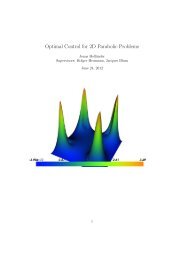
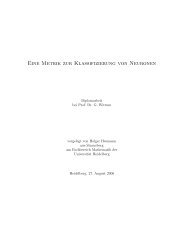
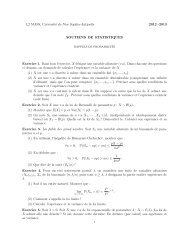
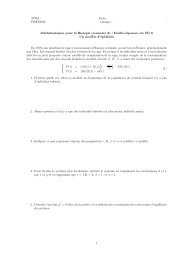


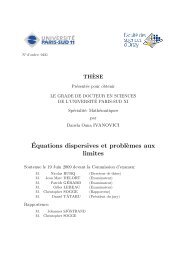
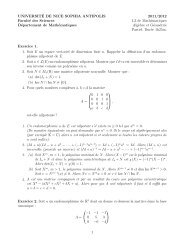
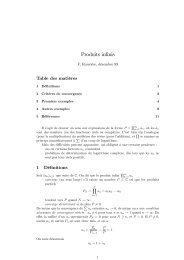
!['eries enti\`eres (+ [D78 Th d'Abel angulaire])](https://img.yumpu.com/14067031/1/184x260/eries-entieres-d78-th-dabel-angulaire.jpg?quality=85)

